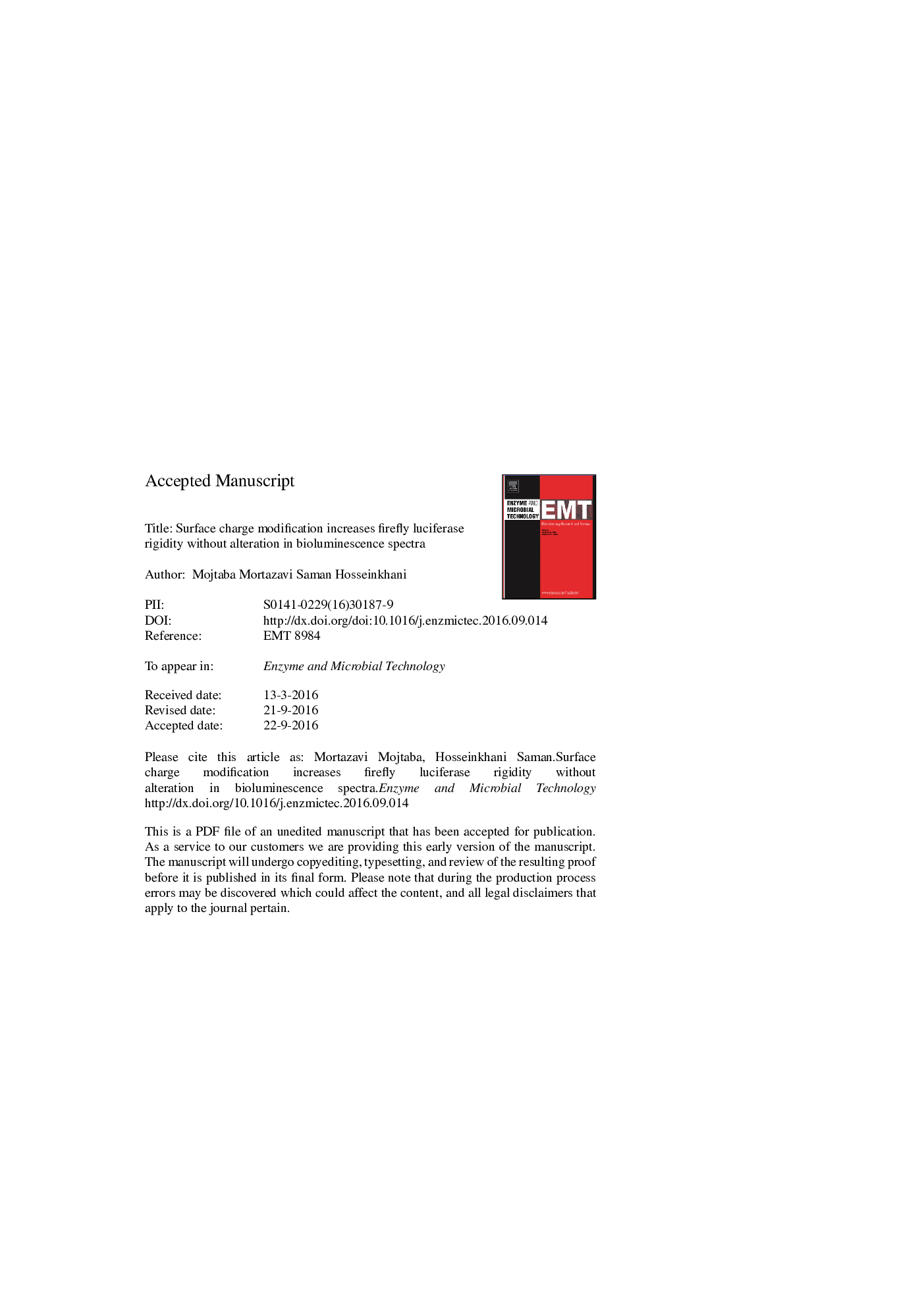| Article ID | Journal | Published Year | Pages | File Type |
|---|---|---|---|---|
| 4752857 | Enzyme and Microbial Technology | 2017 | 33 Pages |
Abstract
Protein engineering can provide useful approaches for loop anchoring and mutation of surface-exposed loop residues to Arg for the design of thermostable proteins. In this context and due to the high proportion of surface loops, some of the solvent-exposed residues in the Lampyris turkestanicus luciferase were mutated to Arg. Using the red-emitter mutant luciferase (E354R/Arg356), the single (-Q35R, -I182R, -I232R and -L300R), double (-Q35R/I232R) and triple (-Q35R/I232R/I182R) mutant luciferases were introduced. The relative remaining activity of -I232R, double and triple mutants increased significantly compared to the wild-type at 40 °C. The optimal temperature of these mutants increased up to 40 °C which were 15 °C more than wild-type luciferase. It is anticipated that these mutations increased the local interactions that finally improved the thermostability and optimum temperature of luciferase. It should be noted that Arg substitution at amino acid positions 35, 182 and 232 had no effect on the bioluminescence emission spectra. Furthermore, these mutations have not significantly changed the specific activities of firefly luciferases. Finally, with the use of the homology modeling and molecular docking, the effects of these substitutions were evaluated. In conclusion, this study provides beneficial insights on how the thermal stability of luciferase can be improved by protein engineering for biological applications.
Related Topics
Physical Sciences and Engineering
Chemical Engineering
Bioengineering
Authors
Mojtaba Mortazavi, Saman Hosseinkhani,
